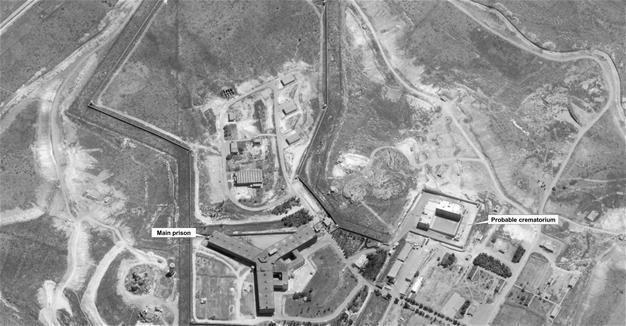US says Syrians built crematorium at prison
 The United States has evidence the regime of Syrian President Bashar al-Assad has built a crematorium at a large military prison outside the capital Damascus, a State Department official said on May 15.
The United States has evidence the regime of Syrian President Bashar al-Assad has built a crematorium at a large military prison outside the capital Damascus, a State Department official said on May 15.The Syrian government on May 16 denied the accusations.
Stuart Jones, the acting assistant secretary for Near Eastern Affairs, said U.S. officials believe the crematorium would be used to dispose of bodies at a prison, where they believe Assad’s government authorized the mass hangings of thousands of inmates during Syria’s 6-year-old civil war.
“Credible sources have believed that many of the bodies have been disposed in mass graves,” Jones told reporters at a briefing. “We now believe that the Syrian regime has installed a crematorium in the Sednaya prison complex which could dispose of detainees’ remains with little evidence,” he said.
The United States believes the crematorium would be used to cover up mass murders at the prison and will present the evidence to the international community, Jones said.
Amnesty International reported in February that an average of 20 to 50 people were hanged each week at the Sednaya military prison. Between 5,000 and 13,000 people were executed at Sednaya in the four years since a popular uprising descended into war, it said.
The Syrian government also denied that accusation.
Amnesty said the executions took place between 2011 and 2015, but were probably still being carried out and amounted to war crimes.
In the briefing on May 15, Jones showed aerial images of what he said was the crematorium at the Sednaya site.
A Syrian foreign ministry statement published by state news agency SANA said the U.S. administration had come out with “a new Hollywood story detached from reality.”
It was not immediately clear why the United States waited more than two years to present its evidence. Jones said: “I would say that this information has been developing.”
He also said Secretary of State Rex Tillerson had raised concerns about Syrian President Bashar al-Assad’s brutality with Russia’s Foreign Minister Sergei Lavrov during his visit to Washington last week.
When asked whether the Sednaya deaths could trigger action, White House spokesman Sean Spicer said U.S. President Donald Trump would never “telegraph the actions he takes.”
“When he’s ready to act, he will let everyone know,” he said.
Meanwhile, a new round of Syria peace talks opened on May 16 in Geneva, the latest United Nations push to resolve the conflict. Five previous rounds of U.N.-backed negotiations have failed to yield concrete results and hopes for a major breakthrough remain dim.
The Syrian regime has strengthened his position on the ground, with the rebels reeling from a major setback in the capital Damascus.
Assad has also recently called the Geneva process “null,” telling Belarus’s ONT channel that it had become “merely a meeting for the media.”
The Syrian leader has however given more credit to a separate diplomatic track in Kazakhstan’s capital Astana, which is being led by his allies Russia and Iran along with Turkey.
The Astana track produced a May 4 deal to create four “de-escalation” zones across some of Syria’s bloodiest battlegrounds.
















